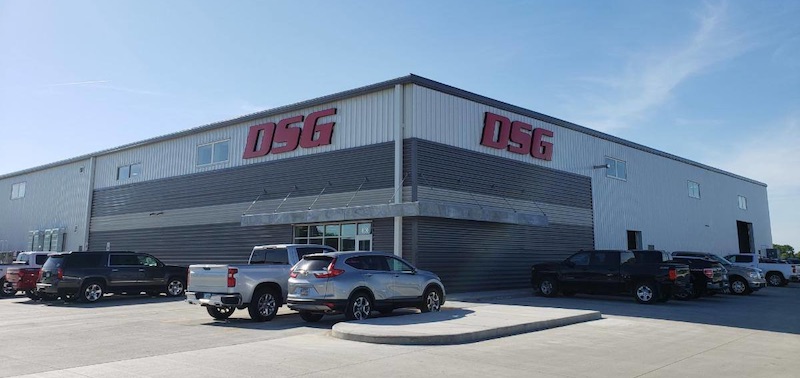I constantly see companies with great revenue management, pricing and go-to-market strategies that produce mediocre results. The problem? Price execution.
A strategy is only as good as the execution. This is especially important for companies with complex route to market structures; going from distributors, wholesalers, retailers and other partners means everybody takes a piece of the pie. The realized selling price might not match the optimal strategy for growth, so ensuring execution is vital.
Now, before you lecture me on competition law, let me be clear. The price is at the sole discretion of the seller and cannot be dictated by anyone else. In fact, anything contrary to this would be illegal. However, the price can be recommended as part of a joint business plan and programs and incentives can be incorporated to drive optimal behavior.
I often hear, “It doesn’t matter what my downstream partners are selling it for as long as I am happy with the price we are selling it for.” This is far from true. Price visibility is vital in order to step-change optimal decision-making. There are three key benefits from visibility:
1. Prevents channel conflict
2. Optimizes investment decisions
3. Drives business growth
Prevents channel conflict
When conflict is created, it alienates channel partners, erodes their volume and creates uncompetitive market conditions. This usually ends up with channel partners requiring discounts at your expense. With the digitization of the economy and emergence of online shopping (and with it, online price comparisons), the prevalence of channel conflict has only increased. For example, those who sell through Amazon are well versed in the pricing algorithm that adjusts pricing within minutes to stay competitive with other retailers.
Gaining downstream price visibility can help mitigate much of this conflict. By having a clear understanding of margin requirements and market-level pricing strategies for channel partners it is easy to work backwards to ensure that it isn’t our behavior causing the channel conflict. Many CPG companies will be familiar with Walmart’s weekly reporting on price competitiveness and the implications of not providing the most competitive programs. Without having price visibility, one channel or customer may be capable of driving the entire market down, a costly consequence.
Optimizes investment decisions
Let’s be honest. Almost no one sells at full or list price. There is almost always a discount somewhere. Many discounts are unconditional but best practices expect that by driving costs down via discounting, a portion of the savings will be passed down to the value chain. This is especially true when lowering prices to drive volume via promotion. It is important to have visibility into the price throughout the value chain to understand if the discount is truly driving purchasing behavior.
For example, we worked with a manufacturer that dropped their price to the market by 7% in order to be more competitive with competitors and drive volume. Unfortunately, their sales volume did not increase. Why? Three of the largest retailers in the space scooped up the additional margin and kept the shelf prices the same. It was almost four months before the manufacturer was able to understand why the volume wasn’t increasing. The problem? The manufacturer did not have price visibility! They did not do any price audits, so they did not know they were being margined upon, resulting in an awful investment in price and money going down the drain. To understand the ROI on price investments, price visibility is essential.
Helps drive business
For many companies, the route to market is a complex journey. There are many players in the value chain, and it can be difficult to understand what factors drive the business. For example, auto parts manufacturers sell to distributors, who sell to chain stores or suppliers, where individual mechanics order from on an as-needed basis. The product passes through many hands before finally reaching the end-user.
If the manufacturer were to adjust the price down to the distributor, it wouldn’t necessarily result in any change in incremental volume. Why? Because the distributor doesn’t influence the purchase decision. It is important to understand who the decision-maker is in the purchase. In most cases, the mechanic is the one making the part recommendation to the customer. They make a margin selling these parts to customers in their shop. The mechanic tries to maximize their margin while staying within the price requirements of the vehicle owner. Therefore, the price offered to the market can’t be optimized for the distributor, but rather for the mechanic.
To price for the mechanic, you must establish price visibility along the value chain. How much does the mechanic pay? How much does the dealer buy from the distributor? And so on and so forth. Having price visibility drives the decision-making process to allow for more clear decision-making on what needs to be optimized to drive business.
How to establish price visibility
Getting price visibility is easier said than done. It takes time and persistence but can provide huge competitive advantages if achieved. Here are some of my recommended best practices:
1. Leverage syndicated data. Depending on your industry, there may be syndicated/market data available. IRI and Nielsen are two of the largest data providers, giving immense detail on your price, volume and SKU level as well as that of your competitors. One downside to getting data from these big players is that it is very expensive, so you need to scale. They do offer less granular data at a more affordable price which is also an option.
2. Utilize third-party data. If costs are a concern for you, many third parties also provide price data. They are usually more affordable and a great place to start. Though, the data is not as granular as the syndicated option. Third-party data is sourced from market audits, visiting stores, calling for price quotes, or through partner organizations provides a snapshot of the market at a point in time.
3. Initiate data sharing agreements. Your partners have visibility on the products they have sold and for what price. Based on this information, getting an idea of what prices should be along the value chain is made much easier. For visibility purposes, point of sale (POS) or transactional data may be best.
But beware, companies will rarely be willing to share this data free of charge. When fostering a data-sharing agreement, tie in a rebate or an additional discount in exchange for data sharing, making the discount conditional on sharing information (hopefully providing a great ROI).
4. Get down and dirty. This is my favorite method because this is what we do every day. The internet is a great resource for finding information on price. Visiting retailer websites, reading through catalogs, scouring social media sites like Reddit or Facebook, calling customers about volume discounts, and scraping websites using basic code can provide you with a wealth of information. The best part? It’s all free (or relatively cheap).
Just one word of caution on this approach, in many cases you get an idea of a “list” price that has no discount baked in. So, take the extra step of picking up the phone and getting actual quotes for a complete apples-to-apples comparison.
Getting started
As I mentioned, establishing price visibility is not easy. Here are some additional tips that I have found useful when helping clients achieve visibility:
1. Let the 80/20 rule work for you. While price visibility is important, the truth is that you don’t need visibility on everything. In most cases, a small number of products (20%) make up the majority of revenue (80%). By achieving price visibility on your 20% of products, it will provide you the best return for your efforts.
2. It’s OK to make assumptions. You probably won’t get all the data you were looking for and will have to make assumptions to fill in the gaps, and that’s ok. Let’s return to the example of the automotive parts. If through conversation, you are made aware that other distributors make a 15% margin, but you don’t know how they priced the part, then an assumption about the price is reasonable. However, you have to make sure assumptions are done consistently. It is important to update your assumptions as needed when you come across new information and always try to improve your assumptions to ensure they are logical and consistent.
Price visibility is not an easy undertaking. It’s ok to experiment with different strategies and even get it all wrong. In time, you begin to understand what works and what doesn’t for your industry. Though it can be expensive and time-consuming, getting a good grasp on visibility can help you better understand how pricing decisions are made. This allows you to be more effective in managing your business and accelerate your top and bottom-line growth. A worthwhile investment.
Related Posts
-
At MDM’s upcoming Sales GPS Conference in Chicago, Mike Emerson and Mike Marks of Indian…
-
How distributors will plan and adapt for 2022. Actionable insights to build profitable revenue and…
-
In his new job, Buelow will oversee all of DSG’s sales and marketing functions across…





